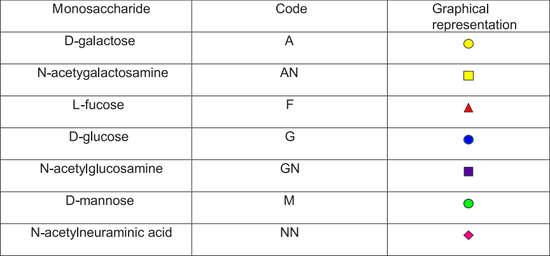Glycan structures
Contents |
Glycan
The terms glycan and polysaccharide are defined by IUPAC as synonyms meaning "compounds consisting of a large number of monosaccharides linked glycosidically".[1] However, in practice the term glycan may also be used to refer to the carbohydrate portion of a glycoconjugate, such as a glycoprotein, glycolipid, or a proteoglycan, even if the carbohydrate is only an oligosaccharide.[2] Glycans usually consist solely of O-glycosidic linkages of monosaccharides. For example, cellulose is a glycan (or, to be more specific, a glucan) composed of β-1,4-linked D-glucose, and chitin is a glycan composed of β-1,4-linked N-acetyl-D-glucosamine. Glycans can be homo- or heteropolymers of monosaccharide residues, and can be linear or branched.
Glycan structures in BioUML
One is able to define glycan structure for chosen species by adding special attribute "glycanStructure" of node or using Antimony. This attribute should contain string value of
Visual representation
References
- ↑ "IUPAC Gold Book - Glycans"
- ↑ Dwek, Raymond A. (1996). "Glycobiology: Toward Understanding the Function of Sugars". Chem. Rev. 96 (2): 683–720. doi:10.1021/cr940283b. Retrieved 3 October 2013.
